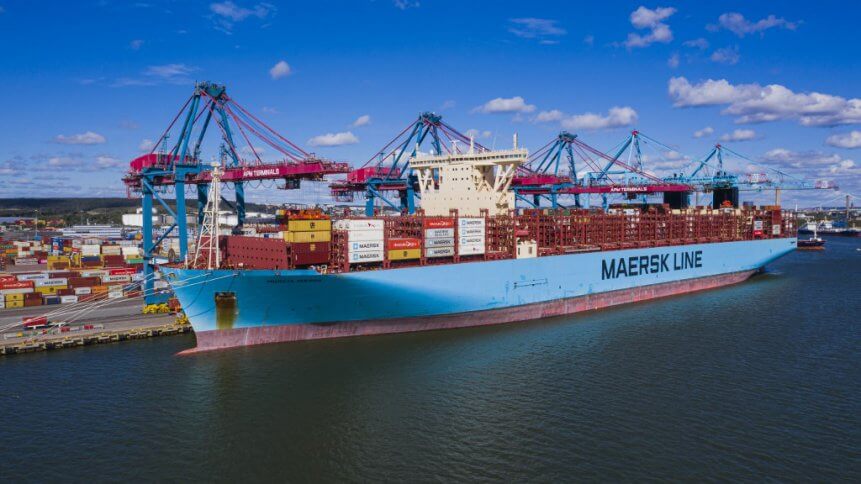Shipping giant Maersk sails towards e-commerce next

Danish maritime transport giant Maersk said last week that it was buying two e-commerce companies as surging demand for shipping led to another bumper profit in the second quarter of 2021.
The group is acquiring Visible Supply Chain Management (Visible SCM), a US e-commerce logistics provider valued at US$838 million, and B2C Europe, which specializes in cross-border parcel delivery services and is valued at US$86 million.
“Our earnings and cash flow enable us to further accelerate our transformation, invest in growing the business, also through targeted acquisitions,” Maersk chief executive Soren Skou said in a statement. “These two companies will further accelerate our logistics growth particularly in e-commerce by adding technology and last mile delivery capabilities for our customers in the United States and Europe.”
“Maersk has set out to build strong e-commerce logistics capabilities that will extend and reinforce our existing supply chain offering and create growth opportunities. Today, customers rely on the integrated logistics approach and services which Maersk offers,” commented Vincent Clerc, Maersk Ocean & Logistics CEO. “By combining that with the operating models and value proposition of Visible SCM and B2C Europe, we will enable our customers to continue to develop their e-commerce offering, thus extending the scope and potential of our strategic partnerships.
“The acquisitions will provide Maersk with a strong growth platform in the rapidly evolving field of e-commerce, where our investments in digitalization and integration will create significant synergies and make a big difference for customers’ ability to sell across multiple channels effectively,” Clerc added. “Furthermore, they will allow us to have a more comprehensive offering towards small and medium sized customers.”
Maersk’s net profit rose to US$3.7 billion between April and June, a nearly nine fold increase from the same period last year, beating expectations. That was higher than what the group made in the full-year 2020.
As a result of the pandemic, demand for shipping has surged since mid-2020 and especially since the end of the year, in particular from Asia to the US and Europe. But despite quicker acceptance of online strategies, there were numerous obstacles to running a smooth e-commerce operation. The production, packaging, shipping, transportation, and last-mile delivery of products were upended by a sudden surge in consumer demand. On top of that, the mass migration to online channels has led to greater competition among retailers, and even greater expectations from customers.
YOU MIGHT LIKE

3 supply chain strategies to boost e-commerce operations
With that said, focusing on digital sales as opposed to physical allowed a lot of room to grow these new avenues – and fortunately today there are many innovative digital assets to enhance the shopping and shipping experience.
Shipping companies and analysts attribute the rise to consumers purchasing more manufactured products, instead of spending their money on trips and restaurants and other experiences. Additionally, many companies are still in the process of restocking after reducing their orders in the first months of the pandemic.
© Agence France-Presse









